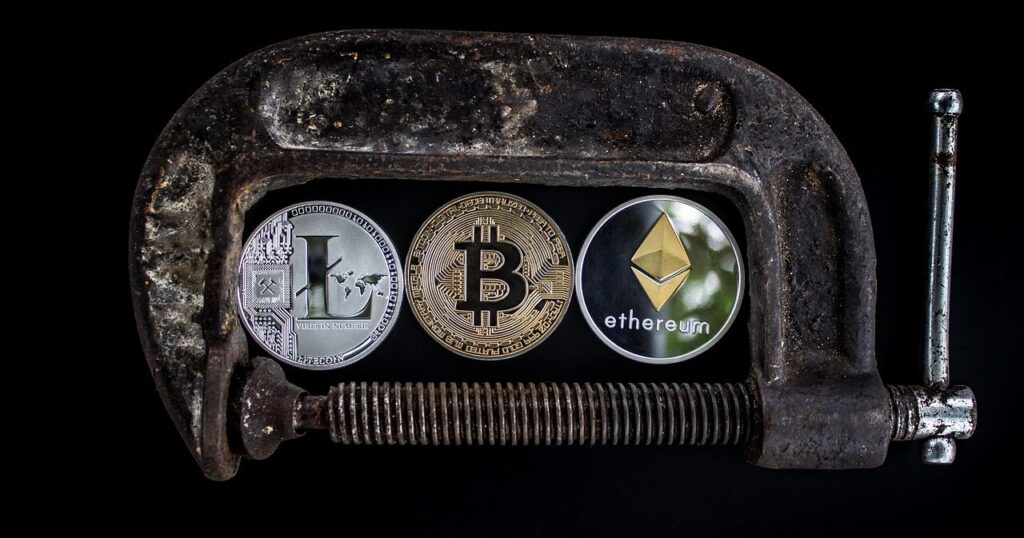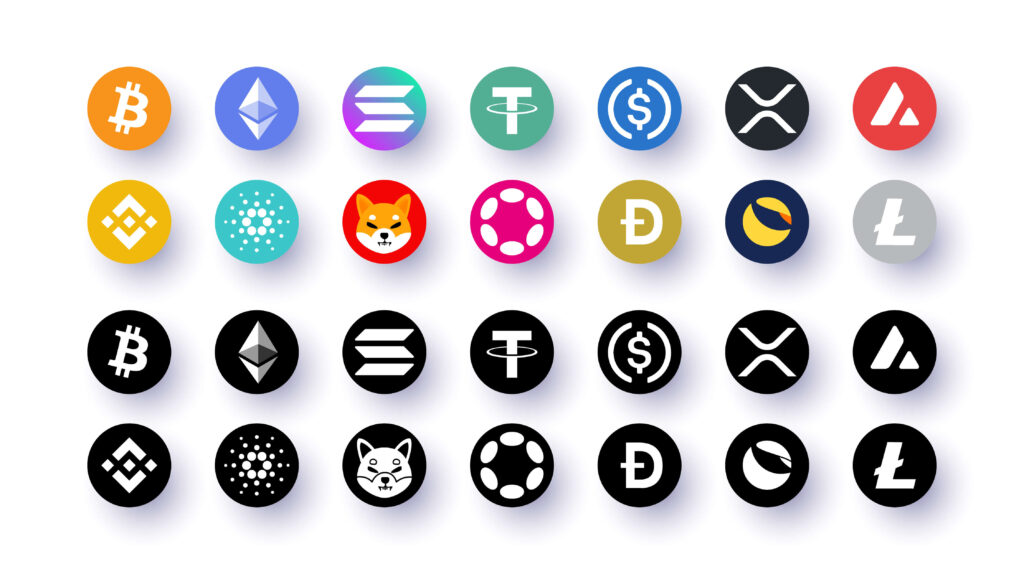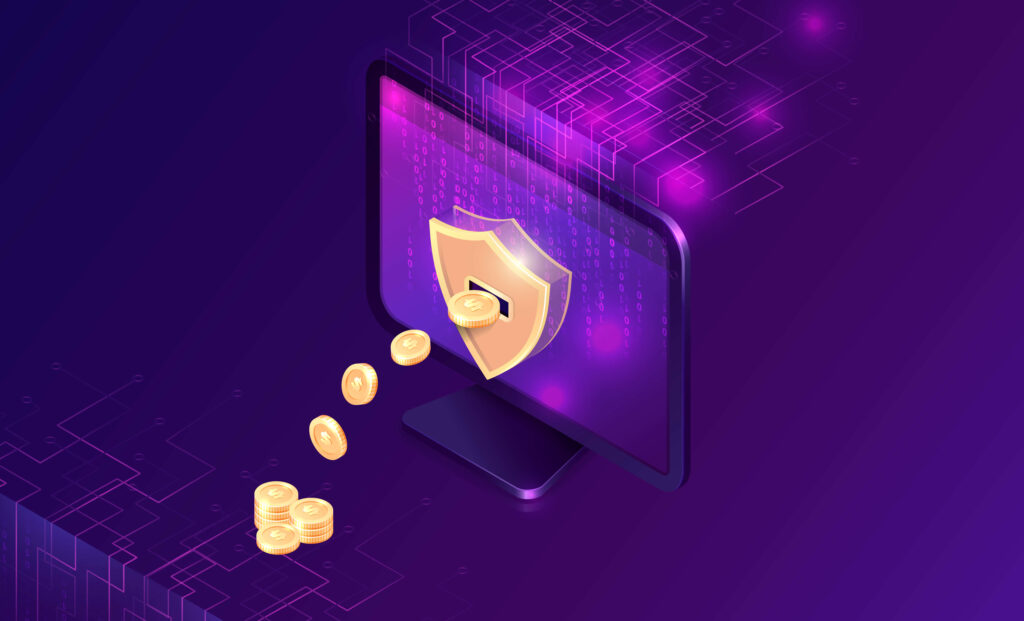
Introduction
In 2025, digital assets such as cryptocurrencies and stablecoins have become the backbone of modern payments, remittances, and digital savings in emerging markets. From freelancers being paid in USDT to fintech startups managing multi-chain liquidity, the blockchain economy now powers real-world commerce. Unfortunately, with this new freedom comes a new form of responsibility: securing these assets.
Unlike traditional finance, where a bank can reverse a fraudulent transaction or issue a new debit card, crypto ownership is absolute. Whoever controls the private keys controls the funds, and a single misplaced password, a fake website, or a malware infection can result in irreversible loss.
This guide provides a complete roadmap for securing your digital assets, whether you’re an individual investor, a cross-border trader, or a fintech building digital payment rails.
Why Security Matters More in African Crypto Adoption

According to Chainalysis, sub-Saharan Africa is the third fastest-growing crypto region in the world, behind AIPAC and Latin America. But unlike speculative trading in the West, most usage here is practical and necessity-driven.
People use crypto and stablecoins to:
- Protect savings from local currency inflation.
- Receive international payments from clients abroad.
-
- Remit money across borders at a fraction of bank or MTO costs.
-
- Power fintech platforms for global commerce and digital wallets.
Because stablecoins like USDT on Tron (TRC-20) are cheap to send and instantly settle, they’ve become the default unit for African crypto payments. However, the same accessibility that fuels adoption also attracts risks, from scams to fake wallets and unauthorized custodians that thrive in low-trust environments. Security in these conditions is more about protecting financial independence than being a technological feature.
Understanding Your Digital Wealth: Crypto and Stablecoins
Digital assets are digital property, and like all valuable property, they demand protection. But not all crypto assets are the same, and understanding their nature helps tailor the right security approach.
1. Cryptocurrencies
Cryptocurrencies such as Bitcoin (BTC), Ethereum (ETH), and other tokens represent decentralized, permissionless forms of money. They’re typically volatile, used as investments or for decentralized applications. Their value can fluctuate wildly, which makes secure long-term storage critical.
Unlike money in a bank, your crypto doesn’t exist in a physical vault. It’s recorded on a blockchain ledger, accessible only through your private keys. If you lose those keys, the blockchain will simply assume your silence, and your assets remain frozen, but effectively lost forever.
2. Stablecoins
Stablecoins like Tether (USDT), Circle’s USD Coin (USDC), and PayPal USD (PYUSD) bridge the gap between traditional money and blockchain networks. These tokens are pegged 1:1 to fiat currencies such as the Euro or the U.S. dollar, and they enable instant, low-cost transfers across borders. For users in Africa, Latin America, and Asia, stablecoins have become a lifeline against inflation and currency instability. Businesses now use them for supplier payments, cross-border payroll, and liquidity management.
However, stablecoins come with unique risks. Because they exist on open networks like Ethereum, Tron, or Solana, they can be sent to the wrong address, stolen through phishing, or locked in incompatible chains.

The Security Mindset
The defining feature of blockchain is self-custody, but it’s a double-edged sword. The same independence that gives you freedom from banks also removes the safety net they provide.
That’s why security is a personal and operational discipline, not optional. Whether you’re holding $50 or $5 million, the best time to protect your digital wealth is before something goes wrong.
The Evolving Threat Landscape in Digital Asset Custody
The promise of crypto has attracted not just innovators but also opportunists. Today’s hackers are organized, patient, and often indistinguishable from legitimate service providers.
According to a report by blockchain intelligence firms, over $1.5 billion worth of crypto assets were stolen in 2024, a sharp increase driven by more sophisticated phishing campaigns and DeFi vulnerabilities.
Let’s explore the major threats to your digital assets today:
1. Phishing and Fake Wallets
Phishing remains the number one cause of digital asset theft. Attackers design emails, websites, or wallet apps that look identical to official brands like Trust Wallet or Binance. When users input their seed phrases or connect wallets, the attackers immediately drain their balances. These scams are especially effective on mobile, where URLs and security warnings are harder to see.
2. Exchange Hacks
Centralized exchanges (CEXs), where most users buy or sell crypto, remain high-value targets. Even well-known platforms have experienced breaches caused by insider leaks, misconfigured APIs, or zero-day vulnerabilities. Though exchanges increasingly use cold storage and insurance funds, no centralized platform is risk-free. The safest exchange is one you use only for transactions, not for long-term storage.
3. Smart Contract Exploits
Decentralized Finance (DeFi) platforms automate financial services through self-executing code on the blockchain, known as smart contracts. However, bugs or malicious logic in that code can allow attackers to manipulate transactions, drain liquidity pools, or mint tokens illegally. If you’re yield farming, staking, or providing liquidity, it’s crucial to understand that audited contracts reduce risk but never eliminate it.
4. Malware and Keyloggers
Malware can silently monitor your device, record every keystroke, and capture screenshots of wallet interfaces. These programs often enter through fake browser extensions or compromised files disguised as wallet tools or updates. One careless download can hand over your seed phrase and savings in seconds.
5. Deepfake and Social Engineering Attacks
Attackers increasingly exploit AI-generated videos, voices, and online personas to deceive both organizations and users in the digital asset space. Deepfakes are now being used to impersonate exchange representatives, compliance officers, or business partners, often requesting “urgent” access to wallets or fund transfers that appear legitimate.
Beyond corporate targets, hackers also hijack the social media accounts of high-profile figures, including celebrities and tech leaders like Elon Musk, to announce fake coin launches or giveaways that trick users into connecting their wallets or sending funds. These sophisticated social engineering campaigns prove that the modern scammer no longer relies solely on code but on credibility and manipulation, turning trust itself into the primary attack surface.

Core Principles of Crypto and Stablecoin Security
Before diving into the security tools, it’s essential to understand the principles that define effective crypto security.
Control Your Private Keys
The mantra “Not your keys, not your coins” remains true in every moment you interact with crypto. Private keys are the cryptographic strings that prove ownership of your assets, meaning if someone else holds them, they control your funds.
Best practices:
- Use hardware wallets for cold storage purposes.
-
- Write down your seed phrase on paper or metal plates and never store it digitally.
-
- Keep multiple backups in separate, secure locations, for example, a safe or safety deposit box
-
- Never share your keys or phrases with anyone, even support staff.
Stablecoins are no exception, as USDT or USDC on a blockchain are just as vulnerable to theft as Bitcoin. In late 2023, for example, hackers reportedly stole over $27 million worth of Tether (USDT) from a user’s wallet linked to Binance.
The incident underscored a critical truth: that even assets designed for stability are only as secure as the wallets and protocols that protect them. Whether it’s Bitcoin, Ether, or stablecoins, digital asset security depends on robust key management, vigilant monitoring, and rapid incident response.
Differentiate Cold and Hot Wallets
A cold wallet is a wallet not connected to the internet, perfect for long-term storage, while a hot wallet is one used for daily activity, always online, and therefore more exposed.
A good rule of thumb in the crypto space is:
- Store 95% of assets in cold storage for safekeeping.
- Keep 5% in hot wallets for transactions.
For fintech operators, treasury funds should always remain in multi-signature cold wallets with limited personnel access.
Enforce Multi-Factor Authentication (MFA)
Passwords alone are insufficient, so it’s crucial to enable multi-factor authentication (MFA) or two-factor authentication (2FA) using authenticator apps like Authy or Google Authenticator or hardware security keys. Avoid SMS-based authentication because they are vulnerable to SIM-swapping attacks, which can bypass authentication entirely.
Compartmentalize Your Wallets
Think of wallet segmentation as having different accounts for different purposes:
- Trading wallet: For exchanges and liquidity operations.
-
- Spending wallet: For payments and transfers.
-
- Storage wallet: For long-term holdings.
This approach limits exposure; even if one wallet is compromised, your main reserves remain intact.
Maintain Software Integrity
Every app, browser extension, or plugin you install is a potential risk.
- Regularly update wallet software, browsers, and firmware.
-
- Avoid using public Wi-Fi for crypto transactions.
-
- Periodically scan your device for malware.
-
- Never install random files or “airdrops” promising free tokens.

How to Store Digital Assets Safely
Crypto and stablecoins have transformed digital finance, but their convenience hides their fragility. A single wrong network choice or address typo can make funds disappear forever.
1. Choose the Right Network
Digital assets exist on multiple blockchains, from Ethereum to Tron, Solana, BNB Chain, and more. Before transferring them, always confirm the network. Sending USDT (TRC-20) to an ERC-20 wallet will permanently lock your tokens. Whether using stablecoins to pay suppliers in China or for business payments, test the transfer with a small amount before making bulk payments.
2. Minimize Custodial Risk
Custodial wallets controlled by exchanges or third-party apps manage the crypto keys for you. Although convenient, they often introduce counterparty risk, meaning if the company is hacked or restricted, your assets could be frozen. For large balances, use non-custodial wallets where you retain full control of your keys.
3. Enable Withdrawal Whitelisting
Many exchanges now allow address whitelisting, meaning withdrawals can only go to pre-approved wallets. This simple feature prevents attackers from changing withdrawal destinations even if they gain account access.
4. Double-Check Every Transaction
Stablecoins move fast, often settling payments within seconds, and blockchain transactions are irreversible.
Before clicking “Send,” verify:
- The recipient addresses character by character.
-
- The blockchain network.
-
- The transaction fee is to avoid congestion or errors.
It’s better to be patient instead of regretting later for doing things too fast.

How Fintechs and Businesses Can Protect Stablecoin Holdings
As fintech companies integrate stablecoins for cross-border payments, treasury operations, or remittances, security evolves from personal practice to institutional policy.
Establish Clear Custody Frameworks
Define how your organization manages private keys, approvals, and backups.
- Use multi-signature wallets
-
- Require multiple authorizations for large transfers.
-
- Keep recovery keys in geographically separate, secure environments.
This minimizes insider risk and prevents unilateral access. Fintechs using YoguPay’s custody APIs can automate much of this process. Its infrastructure integrates multi-signature logic and policy-based transfers directly into treasury operations, ensuring that no single employee or system can move funds without collective authorization.
Integrate Compliance Controls
Stablecoins operate across jurisdictions, often triggering financial regulations. Ensure your systems:
- Include Know Your Customer (KYC) and Anti-Money Laundering (AML) processes.
-
- Maintain detailed transaction logs for auditing and regulatory reporting.
While security is often viewed as a technical aspect of stablecoin management, it is equally a legal and procedural responsibility. With compliance-first API stacks like YoguPay’s fintechs can embed KYC/AML verification and address screening directly into their payment flows. This enables businesses to remain compliant across multiple markets without adding friction for users.
Adopt Enterprise-Grade Infrastructure
Fintechs managing millions in assets rely on Hardware Security Modules (HSMs) designed to protect cryptographic keys from tampering. When combined with Multi-Party Computation (MPC) systems, even internal breaches become virtually impossible.
Conduct Regular Audits and Simulations
Quarterly security audits help detect blind spots before attackers do. Combine them with simulated phishing and social engineering drills for staff because a team that knows how to respond to threats is far more resilient than one relying solely on technology.

Emerging Technologies Strengthening Digital Asset Security
Innovation in digital asset security is accelerating, bringing solutions that make custody both safer and more user-friendly.
1. Account Abstraction
Ethereum’s account abstraction trend enables programmable wallets with built-in recovery mechanisms, spending limits, and user-defined permissions. This allows for self-custody without complexity, merging the ease of fintech apps with blockchain sovereignty.
2. Multi-Party Computation (MPC) Wallets
MPC wallets split private keys into multiple encrypted fragments stored across devices or servers. No single device holds the complete key, meaning even if one node is compromised, assets remain secure. Institutions like Coinbase and Fireblocks use MPC to secure billions in client assets.
YoguPay adopts a similar security-first approach, integrating Multi-Party Computation technology into its Wallet-as-a-Service (WaaS) infrastructure. Through its API-driven architecture, YoguPay enables fintechs and payment service providers to deploy secure, scalable wallets with built-in key fragmentation, automated recovery and real-time monitoring to protect digital assets without sacrificing usability or speed.
This MPC-embedded design is valuable for cross-border payments and remittances, ensuring transaction integrity, compliance, and trust across multiple markets.
3. Decentralized Identity (DID)
DID frameworks let users verify identity cryptographically, without exposing personal data.
This protects against identity theft and phishing while making compliance smoother for fintechs handling stablecoin transfers.
4. AI-Driven Fraud Detection
AI tools now analyze behavioral patterns, wallet activity, and network traffic to detect anomalies in real time. By spotting deviations early, such as suspicious logins or rapid withdrawals, they can automatically freeze or flag potential thefts.
Companies like YoguPay use integrated AI-powered transaction analysis in their payment infrastructure, evaluating wallet activity and flagging risky addresses to allow verified wallets to participate in cross-border transfers.

Common Mistakes to Avoid
The most catastrophic crypto losses often stem from small, preventable errors. Avoid these traps:
- Storing seed phrases in screenshots, emails, or cloud drives.
-
- Reusing passwords or using personal emails for crypto accounts.
-
- Connecting wallets to suspicious airdrops or dApps.
-
- Sending stablecoins to the wrong network.
-
- Trusting unsolicited “support” messages on social media.
Crypto security is a mindset of skepticism and discipline. As such, when in doubt, pause for a while.
Building a Personal Crypto Security Routine
Consistency is more powerful than any single tool. A well-structured routine builds long-term resilience.
Daily
- Verify all website URLs before logging in.
-
- Avoid signing new smart contracts unless verified.
-
- Keep devices locked and disconnected when idle.
Weekly
- Check recent wallet and exchange activity for unauthorized logins.
-
- Update firmware and applications.
-
- Revoke old token permissions using tools like Revoke cash.
Monthly
- Rotate passwords and security keys.
-
- Verify that all backups are intact and accessible.
-
- Audit holdings: consolidate small wallets and remove obsolete ones.
Treat this like a financial hygiene routine, not something reactive.
Education and Awareness
Technology alone can’t protect your assets if the human behind it is untrained.
Cybercriminals target emotions like urgency, greed, and fear to bypass rational thinking.
For Individuals
- Follow official project channels only.
-
- Learn basic blockchain operations before using new decentralized applications.
-
- Ignore unsolicited messages offering investments, bonuses, or recovery help.
For Businesses
- Train employees regularly on identifying scams and phishing attempts.
-
- Use test environments for new integrations.
-
- Implement role-based access, in that no single user should control all keys or credentials.

Conclusion
The rise of crypto and stablecoins marks a turning point in global finance. But while technology has made money borderless, it has also made responsibility personal. To safeguard your digital assets, think like your own bank: cautious, structured, and proactive. Secure your private keys, segment wallets, enable multi-factor authentication, and stay vigilant.
For individuals, this means peace of mind. For fintechs, it means protecting assets, customer trust, and brand integrity. In 2025, stablecoins and crypto are becoming the settlement layer of the global economy, and security is the new infrastructure.
YoguPay is building Africa’s next-generation cross-border payment network, where security, compliance, and accessibility come standard. Visit www.yogupay.com or contact us to learn how we can help you build securely for the future of digital finance.